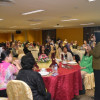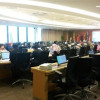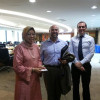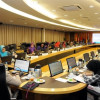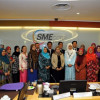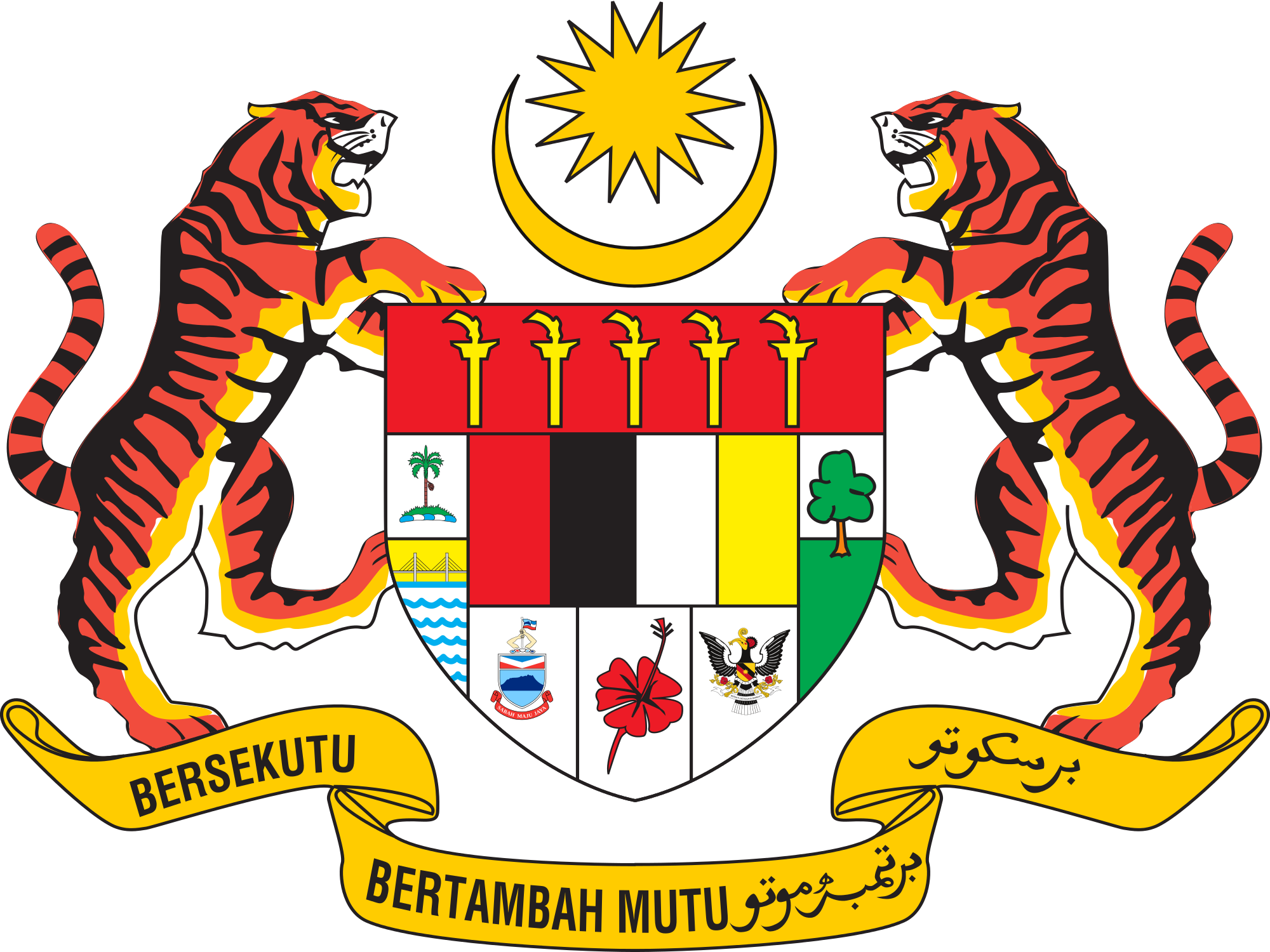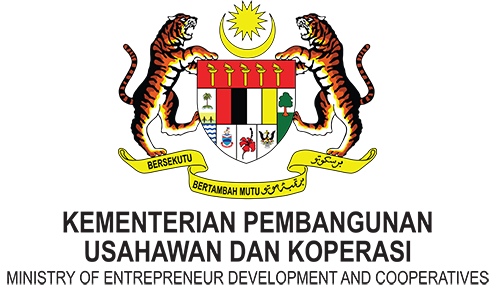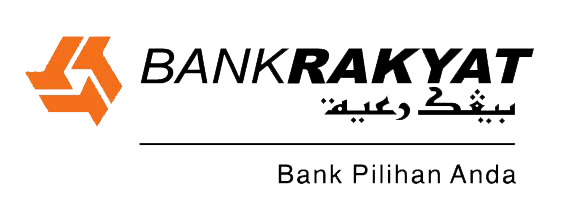| BACKGROUND OF THE CENCUS |
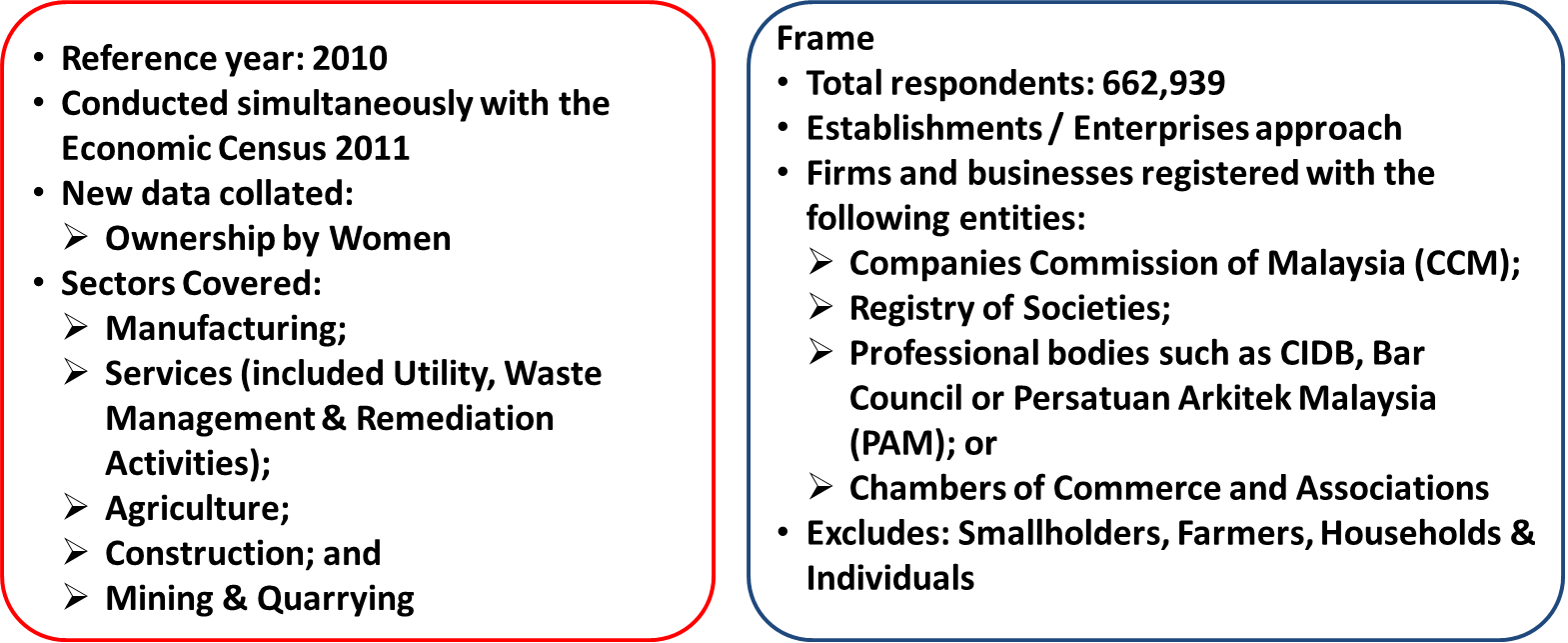 |
| PROFILE OF SMEs |
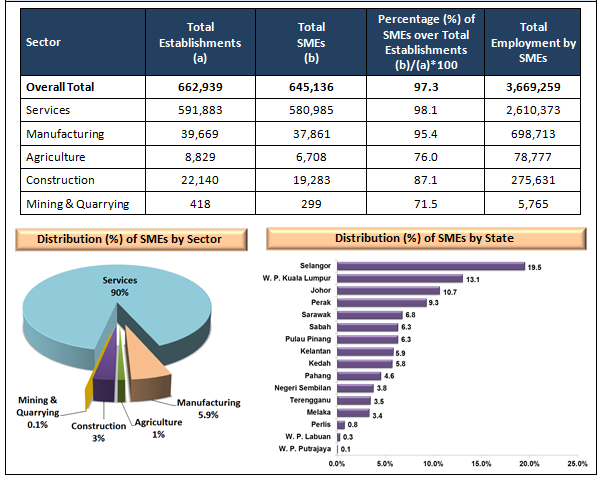 |
 |
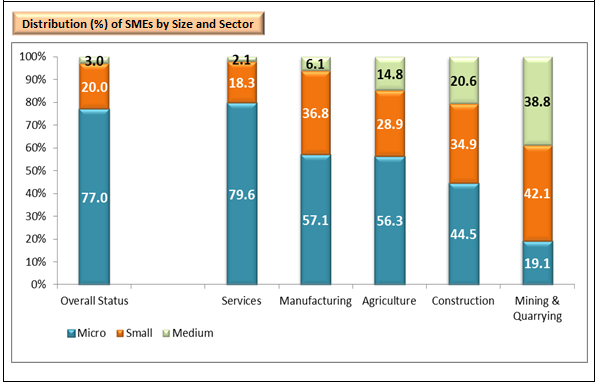 |
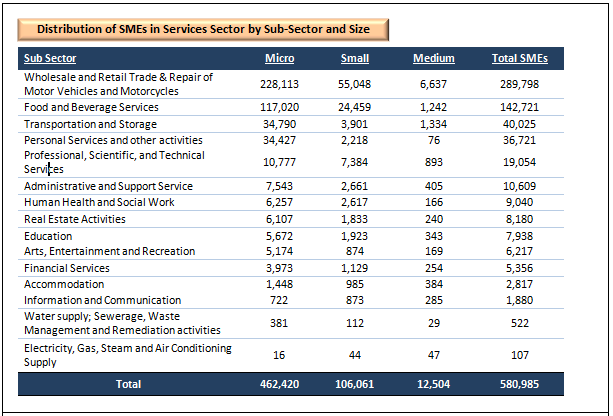 |
 |
 |
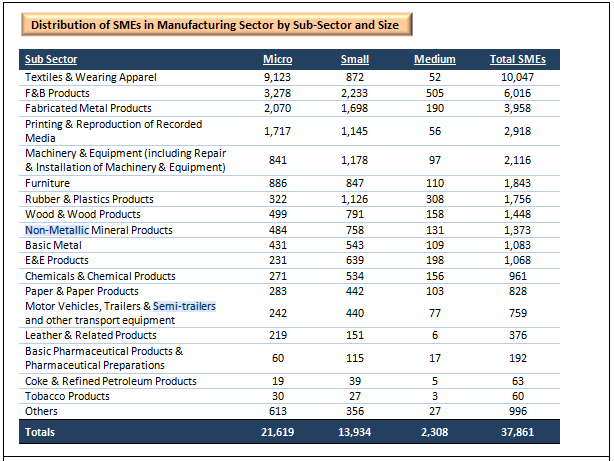 |
 |
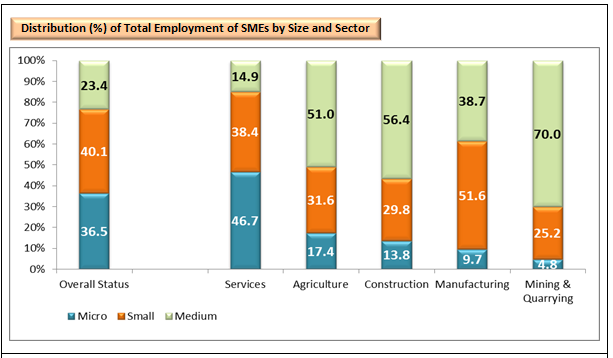 |
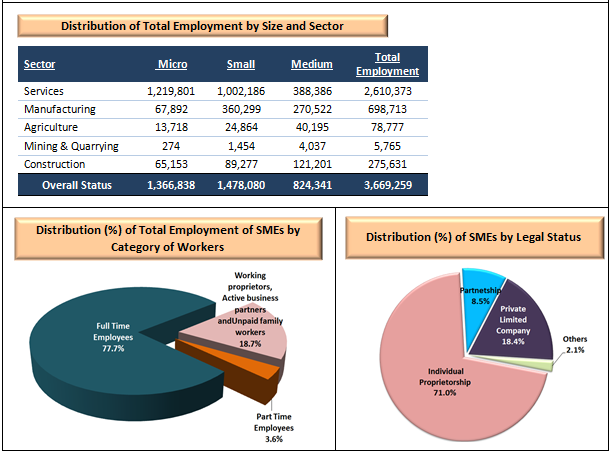 |
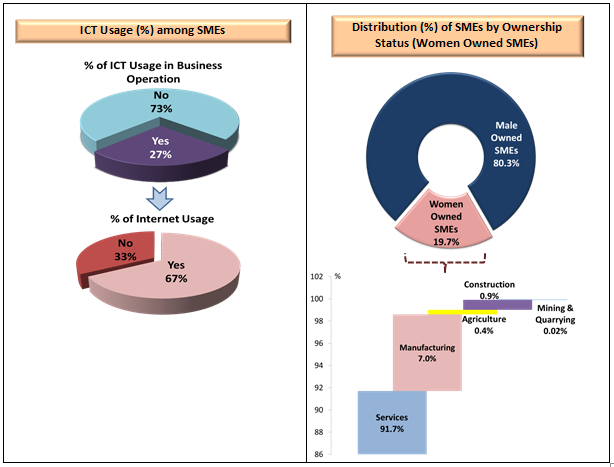 |
 |
Bahasa: | Lain-lain |
Pengenalan
Sebagai Sekretariat Majlis Pembangunan PKS Kebangsaan (MPPK), SME Corp. Malaysia telah menjalankan kaji selidik terhadap PKS sejak tahun 2009 untuk menilai prestasi perniagaan suku tahunan serta mendapatkan maklum balas mengenai isu semasa yang dihadapi oleh PKS di Malaysia. Kaji selidik yang dijalankan dengan kerjasama Bank Negara Malaysia ini adalah menyeluruh dari segi sektor ekonomi, kawasan geografi (termasuk Malaysia Timur), saiz pertubuhan serta jantina.
Prospek Perniagaan PKS pada Tahun 2018 · Dengan saiz sampel sebanyak 2,176 PKS, hasil kaji selidik menunjukkan bahawa prestasi perniagaan PKS telah bertambah baik pada suku pertama 2016. Lebih banyak responden mengalami peningkatan jualan dan keuntungan berbanding dengan hasil Kaji Selidik PKS Suku Ketiga Tahun 2015 (S3 2015). . Prospek Perniagaan PKS pada Suku Tahun Pertama 2016 · Merangkumi 2,336 responden, hasil kaji selidik menunjukkan bahawa terdapat tanda kemerosotan prestasi perniagaan dalam kalangan PKS. Lebih ramai responden merekodkan jualan dan eksport yang lebih lemah berbanding dengan kaji selidik sebelum ini, terutamanya dalam kalangan fima bersaiz kecil dan sederhana. Sebagai contoh, 37.3% daripada responden mengalami peningkatan jualan tahunan, yang mana peratusan ini adalah lebih rendah berbanding 39% yang dicatatkan pada S1 2015. Prospek Perniagaan PKS pada Suku Tahun Ketiga 2015 S1 2015 S3 2014 Prestasi PKS pada Tahun 2019

Economics and Policy Division
SME Corp. Malaysia
8 April 2021Prestasi PKS pada Suku Tahun Ketiga 2018


Prestasi PKS pada Suku Tahun Ketiga 2017
• Kira-kira 50% daripada responden mengalami peningkatan dalam jumlah jualan (S3’ 16: 43.8%) manakala lebih kurang 39% mencatat keuntungan yang lebih tinggi (S3’16: 33.4%).

Prospek Perniagaan PKS pada Suku Ketiga Tahun 2017
• Peningkatan secara berperingkat dari tahun lalu juga turut dicerminkan dalam prospek jangka pendek dengan kira-kira 40% responden menjangkakan perniagaan mereka akan bertambah baik, iaitu lebih tinggi daripada 36.4% yang direkod pada suku sebelumnya. Ini menunjukkan bahawa PKS telah menjadi lebih optimis.
• Faktor utama yang menyumbang kepada prospek perniagaan yang bertambah baik adalah keyakinan pengguna yang positif, sentimen perniagaan yang positif dan perbelanjaan pengguna yang lebih tinggi.
• Walaupun prospek perniagaan kelihatan baik, masih terdapat kebimbangan terhadap peningkatan kos perniagaan dan permintaan barangan dan perkhidmatan yang lebih rendah.

Prestasi PKS pada Suku Tahun Pertama 2017
• Hasil terperinci menunjukkan lebih banyak responden mencatatkan peningkatan dalam jumlah jualan dan keuntungan pada suku pertama tahun 2017, berbanding suku tahun sebelumnya. Kira-kira 49% responden mengalami peningkatan dalam jualan (S3’16: 44%) manakala kira-kira 41% responden mencatat keuntungan yang lebih tinggi (S3’16: 33%).
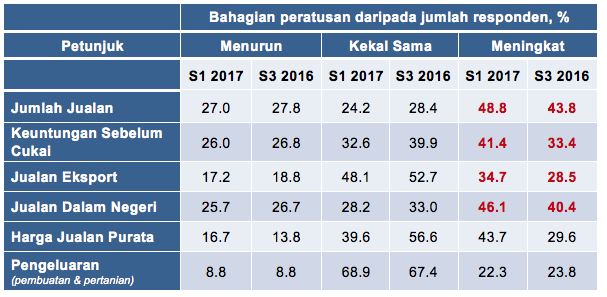
Prospek Perniagaan PKS pada Suku Pertama Tahun 2017
• Prestasi perniagaan yang bertambah baik turut dicerminkan dalam prospek perniagaan jangka pendek. Kira-kira 36% responden menjangkakan perniagaan mereka akan bertambah baik, iaitu lebih tinggi daripada 29.2% yang direkodkan sebelumnya. Hasil ini menunjukkan bahawa PKS semakin optimis terhadap perniagaan mereka.
• Antara faktor utama yang menyokong prospek perniagaan yang bertambah baik adalah keyakinan pengguna yang positif, sentimen perniagaan yang positif dan perbelanjaan pengguna yang lebih tinggi.
• Walaupun prospek perniagaan kelihatan baik, masih terdapat kebimbangan terhadap peningkatan kos menjalankan perniagaan serta penurunan permintaan terhadap barangan dan perkhidmatan.
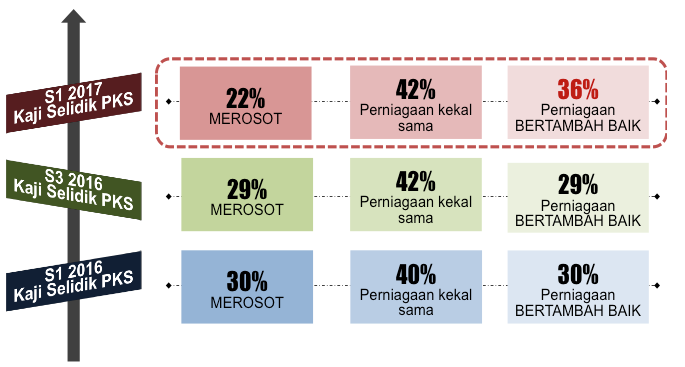
Prestasi PKS pada Suku Tahun Ketiga 2016
· Laporan terperinci menunjukkan kira-kira 44% responden mengalami jumlah keuntungan yang meningkat (S1’16: 42.2%) dan satu pertiga mencatat keuntungan yang lebih tinggi (S1’16: 32.1%), berbanding suku tahun sebelumnya.
Petunjuk
Menurun
Kekal Sama
Meningkat
Bahagian peratusan daripada jumlah responden, %
S3 2016
S1 2016
S3 2016
S1 2016
S3 2016
S1 2016
Jumlah Jualan
27.8
32.8
28.4
25.0
43.8
42.2
Keuntungan Sebelum Cukai
26.8
28.4
39.9
39.5
33.4
32.1
Harga Jualan Purata
13.8
14.4
56.6
53.0
29.6
32.6
Jualan Eksport
18.8
16.3
52.7
50.7
28.5
33.0
Pengeluaran
(pembuatan & pertanian)8.8
13.0
67.4
61.1
23.8
25.9
Jualan Dalam Negeri
26.7
30.9
33.0
29.2
40.4
39.9
· Bagi prospek perniagaan bagi 6 bulan akan datang, kebanyakan responden menjangkakan perniagaan mereka akan kekal stabil walaupun prestasi perniagaan adalah sederhana. Sementara itu, kira-kira 29% adalah optimis dengan prospek perniagaan, terutamanya perusahaan mikro dan PKS di dalam sektor pembuatan dan perkhidmatan.
· Faktor utama yang menyokong prospek perniagaan yang bertambah baik adalah keyakinan pengguna yang positif, sentimen perniagaan yang positif dan perbelanjaan pengguna yang lebih tinggi.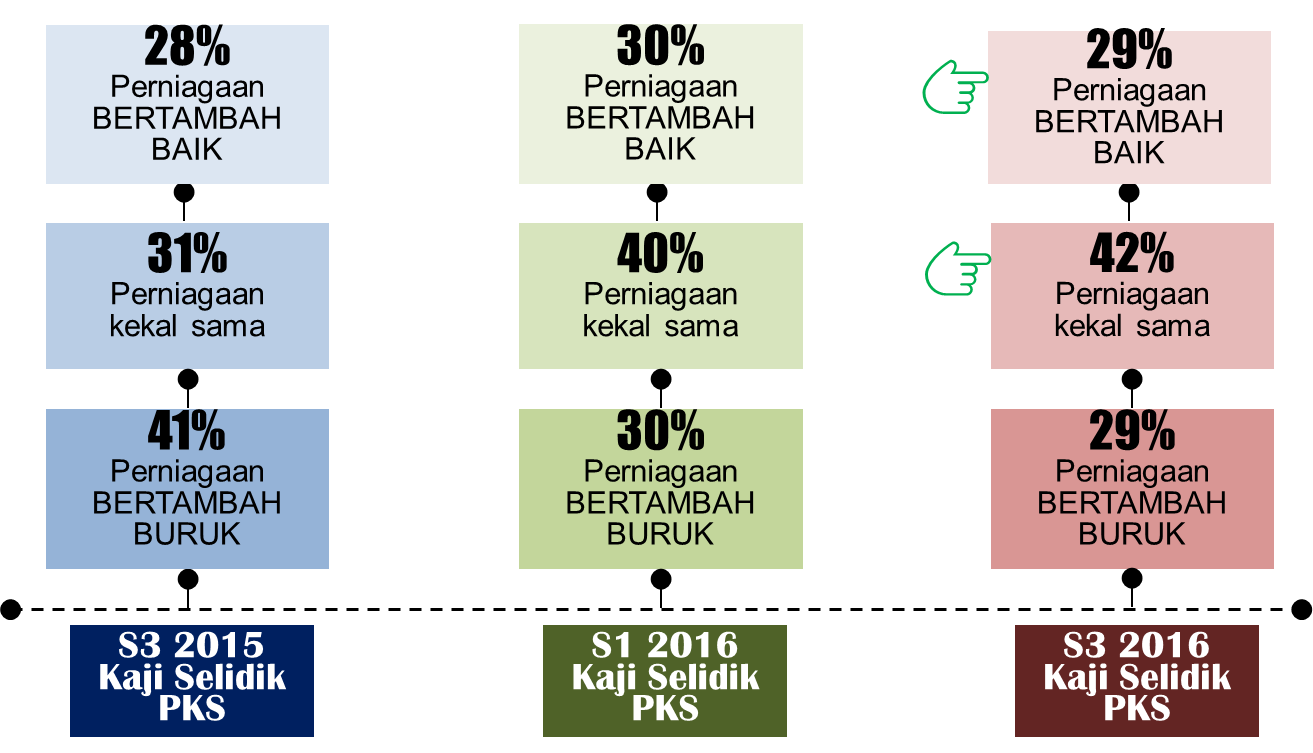
Sumber: Kaji Selidik PKS S3 2016 SME Corp. MalaysiaPrestasi PKS pada Suku Tahun Pertama 2016
· Kira-kira 42.2% responden mencatatkan peningkatan jualan pada S1 2016 berbanding suku tahun sebelumnya, iaitu lebih tinggi daripada 37.3% responden yang dicatatkan pada Kaji Selidik PKS S3 2015. Walau bagaimanapun, terdapat juga beberapa responden yang menunjukkan prestasi bertambah buruk dalam Kaji Selidik PKS S1 2016 berbanding kaji selidik sebelumnya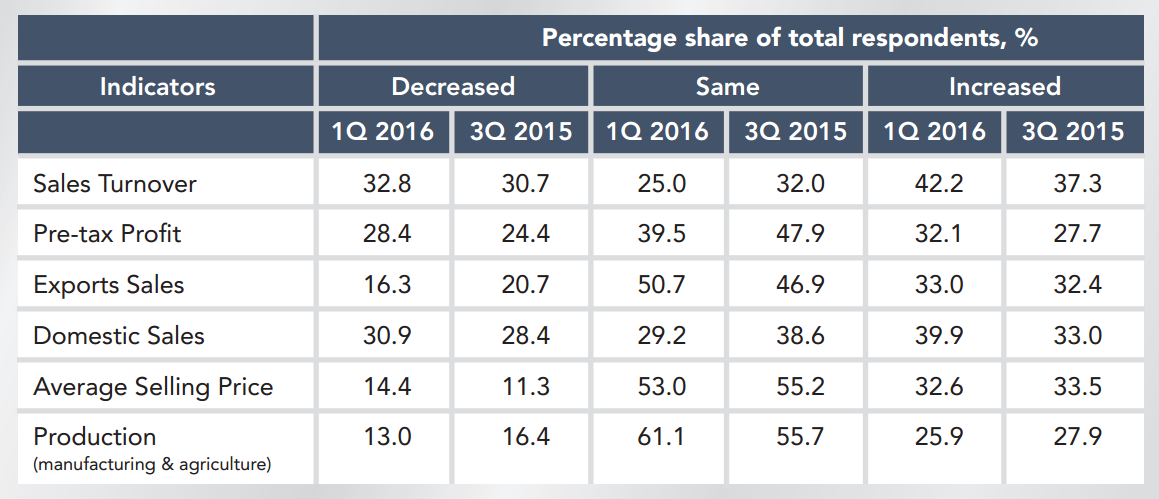
· Peningkatan prestasi perniagaan secara berperingkat juga mencerminkan prospek jangka pendek yang lebih baik. Sebanyak 30.4% daripada responden menjangkakan perniagaan mereka bertambah baik berbanding 28.3% pada kaji selidik sebelum ini, sementara jumlah responden yang menyatakan prestasi bertambah buruk telah menurun dengan ketara kepada hanya 30.2% berbanding 40.5% yang direkodkan pada kaji selidik sebelum ini. Prospek perniagaan bertambah baik turut dicerminkan pada pesanan dan tempahan yang lebih tinggi yang diterima semasa suku tahunan tersebut (S1 2016: 27.5% vs S3 2015: 21.8%). 
Prestasi PKS pada Suku Tahun Ketiga 2015
Petunjuk
Bahagian peratusan daripada jumlah responden, %
Berkurangan
Tiada Perubahan
Bertambah
S3 2015
S1 2015
S3 2015
S1 2015
S3 2015
S1 2015
Jumlah Jualan
30.7
25.6
32.0
35.4
37.3
39.0
Keuntungan Sebelum Cukai
24.4
19.8
47.9
52.9
27.7
27.3
Jualan Eksport
20.7
13.2
46.9
61.2
32.4
25.6
Jualan Domestik
28.4
20.3
38.6
48.2
33.0
31.5
Harga Jualan Purata
11.3
11.6
55.2
59.7
33.5
28.7
Pengeluaran (pembuatan & pertanian)
16.4
8.6
55.7
65.0
27.9
26.3
· Prestasi yang lemah dan kebimbangan mengenai keadaan ekonomi semasa seterusnya dicerminkan pada prospek jangka pendek yang kurang optimistik, dengan 40.5% menyatakan prospek perniagaan akan bertambah buruk dalam tempoh enam bulan akan datang, iaitu prospek bagi bulan Oktober 2015 sehingga Mac 2016. Ini merupakan perubahan persepsi yang ketara berbanding hanya 13.8% menyatakan prospek bertambah buruk pada tahun sebelumnya (Kaji Selidik PKS S3 2014). Responden yang menyatakan prospek bertambah buruk adalah terutamanya daripada fima bersaiz sederhana dan kecil serta daripada sektor pertanian, pembinaan dan perkhidmatan.
Prestasi PKS pada Suku Tahun Pertama 2015

Indikator
Menurun
Tiada perubahan
Meningkat
Peratusan kepada jumlah responden, %
S3 2014
S1 2015
S3 2014
S1 2015
Jumlah jualan
25.6
22.7
35.4
28.8
39.0
48.6
Keuntungan pracukai
19.8
22.4
52.9
38.2
27.3
39.3
Purata harga jualan
11.6
12.9
59.7
52.3
28.7
34.8
Jualan eksport
13.2
12.3
61.2
58.0
25.6
29.7
Pengeluaran (Pembuatan & Pertanian)
8.6
12.3
65.0
52.3
26.3
35.4
Jualan dalam negeri
20.3
-
48.2
-
31.5
-
Prospek Perniagaan PKS pada Suku Tahun Pertama 2015
Prospek Perniagaan Jangka Masa Pendek 
Prestasi PKS pada Suku Tahun Ketiga 2014
• Sebagai contoh, 49% daripada responden mengalami peningkatan jualan tahunan, yang mana peratusan ini adalah lebih rendah berbanding 55% yang dicatatkan pada S1 2014.
Indikator
Menurun
Tiada perubahan
Meningkat
Peratusan kepada jumlah responden, %
S3 2014
S1 2014
S3 2014
S1 2014
S3 2014
S1 2014
Jumlah jualan
22.7
17.7
28.8
27.3
48.6
55.0
Margin keuntungan
22.4
17.1
38.2
38.0
39.3
44.9
Purata harga jualan
12.9
8.2
52.3
49.1
34.8
42.8
Jualan eksport
12.3
8.1
58.0
64.1
29.7
27.8
Pengeluaran (Pembuatan & Pertanian)
12.3
6.6
52.3
55.0
35.4
38.5
Prospek Perniagaan PKS pada Suku Tahun Ketiga 2014
Prospek Perniagaan Jangka Masa Pendek
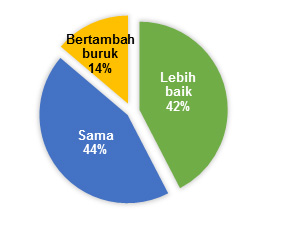
Sumber: Kaji Selidik PKS S3 2014 SME Corp. Malaysia Prestasi PKS pada Suku Tahun Pertama 2014
Prestasi S1 2014 berbanding Prestasi S4 2013
Menurun
Tiada perubahan
Meningkat
Peratusan kepada jumlah responden, %
Jumlah jualan
17.7
27.3
55.0
Margin keuntungan
17.1
38.0
44.9
Purata harga jualan
8.2
49.1
42.8
Eksport
8.1
64.1
27.8
Pengeluaran
(Pembuatan & Pertanian)6.6
55.0
38.5
SME Outlook semasa Suku Pertama 2014
• Secara keseluruhan, kebanyakan responden (51.6%) menjangkakan keadaan perniagaan semasa mereka akan tetap sama dalam 6 bulan akan datang, terutamanya di kalangan PKS bersaiz kecil dan mereka dalam sektor pertanian.
• Walau bagaimanapun, perbandingan di antara sektor menunjukkan bahawa responden di sektor pembuatan secara amnya optimistik kerana separuh daripada mereka dinamakan prestasi yang lebih baik dalam tempoh terdekat ini.

Sektor
Lebih baik
Sama
Bertambah buruk
Pembuatan
49.9
44.5
5.5
Perkhidmatan
36.9
55.5
7.6
Pembinaan
38.6
50.0
11.4
Pertanian
37.3
59.3
3.4
JUMLAH
41.3
51.6
7.1
Sekiranya anda memerlukan maklumat lanjut, sila hubungi:
Puan Farah Yasmin Yahya
Email: Alamat emel ini dilindungi dari Spambot. Anda perlu hidupkan JavaScript untuk melihatnya.
Tel: 03 – 2775 6057
MINISTRY OF AGRICULTURE AND AGRO-BASED INDUSTRY (MOA)
| |
Tel : 603-8870 1200 |  |
Fax : 603-8888 6020 | Laman Web : www.moa.gov.my |
|
Agensi Berkaitan |
Akronim |
Laman Web |
|
Bank Pertanian Malaysia Berhad |
Agrobank |
|
|
Lembaga Pemasaran Pertanian Persekutuan |
FAMA |
|
|
Institut Penyelidikan dan Kemajuan Pertanian Malaysia |
MARDI |
|
|
Tabung Ekonomi Kumpulan Usaha |
TEKUN |
|
|
Lembaga Kemajuan Pertanian Muda |
MADA |
|
|
Jabatan Perikanan Malaysia |
DOF |
|
|
Jabatan Perkhidmatan Vaterinar |
DVS |
|
|
Lembaga Kemajuan Ikan Malaysia |
LKIM |
|
|
Lembaga Pertubuhan Peladang |
LPP |
|
|
Jabatan Pertanian |
DOA |
|
|
Lembaga Perindustrian Nanas Malaysia |
LPNM |
Kementerian Perusahaan Perladangan dan Komoditi (KPPK)
| |
Tel: 603-8000 8000 |  |
Fax: 603-8880 3441 | Laman Web : www.kppk.gov.my |
|
Agensi Berkaitan |
Akronim |
Laman Web |
|
Lembaga Minyak Sawit Malaysia |
MPOB |
|
|
Lembaga Getah Malaysia |
LGM |
|
|
Lembaga Perindustrian Kayu Malaysia |
MTIB |
|
|
Lembaga Kenaf dan Tembakau Negara |
LKTN |
|
|
Lembaga Koko Malaysia |
LKM |
|
|
Lembaga Lada Malaysia |
MPB |
Kementerian Perdagangan Dalam Negeri, Koperasi dan Kepenggunaan (KPDNKK)
| |
Tel : 603-8000 8000 |  |
Fax : 603-8882 5762 | Laman Web : www.kpdnkk.gov.my |
|
Agensi Berkaitan |
Akronim |
Laman Web |
|
Suruhanjaya Koperasi Malaysia |
SKM |
|
|
Bank Kerjasama Rakyat Malaysia Berhad |
Bank Rakyat |
|
|
Perbadanan Nasional Berhad |
PNS |
|
|
Perbadanan Harta Intelek Malaysia |
MyIPO |
Kementerian Tenaga, Teknologi Hijau dan Air (KeTTHA)
| |
Tel: 603-8000 8000 |  |
Fax: 88889 3712 | Laman Web : www.kettha.gov.my |
|
Agensi Berkaitan |
Akronim |
Laman Web |
|
Perbadanan Teknologi Hijau Malaysia |
Greentech |
Kementerian Kewangan (MOF)
| |
Tel : 603-8000 8000 |  |
Fax : 603-8882 3893/94 | Laman Web : www.treasury.gov.my |
| Agensi Berkaitan |
Akronim |
Laman Web |
| Malaysia Venture Capital Management Berhad | MAVCAP | www.mavcap.com |
| Malaysia Debt Ventures Berhad | MDV | www.mdv.com.my |
| Bank Eksport-Import Malaysia | EXIM Bank | www.exim.com.my |
| Bank Pembangunan Malaysia Berhad | BPMB | www.bpmb.com.my |
| Bank Simpanan Nasional | BSN | www.mybsn.com.my |
| Cradle Fun Sdn. Bhd. | Cradle | www.cradle.com.my |
| Perbadanan Kemajuan Iktisad Negeri Kelantan | PKINK | www.pkink.gov.my |
| PROKHAS Sdn. Bhd. | PROKHAS | www.prokhas.com.my |
| Perbadanan Kemajuan Teknologi Malaysia | MTDC | www.mtdc.com.my |
Kementerian Sumber Manusia (KSM)
| Tel : 603-8000 8000 |  |
Fax : 603-8889 2381 | Laman Web : www.treasury.gov.my |
| Agensi Berkaitan |
Akronim |
Laman Web |
| Pembangunan Sumber Manusia Berhad |
PSMB |
www.hrdf.com.my |
| Jabatan Tenaga Manusia |
JTM |
www.jtm.gov.my |
| Jabatan Tenaga Kerja |
JTK |
www.jtksm.mohr.gov.my |
| Jabatan Pembangunan Kemahiran |
JPK |
www.dsd.gov.my |
Kementerian Sains, Teknologi dan Inovasi (MOSTI)
| Tel : 603-8000 8000 |  |
Fax : 603-8888 9070 | Laman Web : www.mosti.gov.my |
| Agensi Berkaitan |
Akronim |
Laman Web |
| MIMOS Berhad |
MIMOS |
www.mimos.my |
| Taman Teknologi Malaysia | TPM |
www.tpm.com.my |
| Institut Piawaian dan Penyelidikan Perindustrian Malaysia Berhad |
SIRIM |
www.sirim.my |
| Malaysian Biotechnology Corporation Sdn. Bhd. | BiotechCorp. | www.biotechcorp.com.my |
| Kumpulan Industri-Kerajaan bagi Teknologi Tinggi Malaysia | MIGHT | www.might.org.my |
| Pusat Maklumat Sains dan Teknologi Malaysia | MASTIC | mastic.mosti.gov.my/web/guest/home |
| Agensi Nuklear Malaysia | NUKLEAR | www.nuclearmalaysia.gov.my |
| Jabatan Standard Malaysia | DSM | www.jsm.gov.my |
Kementerian Kemajuan Luar Bandar dan Wilayah (KKLW)
| Tel : 603-8000 8000 |  |
Fax : 603-8888 9070 | Laman Web : www.rurallink.gov.my |
| Agensi Berkaitan |
Akronim |
Laman Web |
| Lembaga Penyatuan dan Pemulihan Tanah Persekutuan Malaysia |
FELCRA |
www.felcra.com.my |
| Lembaga Kemajuan Terengganu Tengah | KETENGAH | www.ketengah.gov.my |
| Kemajuan Wilayah Kedah | KEDA |
www.keda.gov.my |
| Lembaga Kemajuan Kelantan Selatan |
KESEDAR |
www.kesedar.gov.my |
| Lembaga Kemajuan Johor Tenggara | KEJORA | www.kejora.gov.my |
| Pihak Berkuasa Pengusaha Pekebun Kecil Perusahaan Getah | RISDA | www.risda.gov.my |
| Majlis Amanah Rakyat | MARA | www.mara.gov.my |
| Jabatan Kemajuan Masyarakat | KEMAS | www.kemas.gov.my |
| Jabatan Kemajuan Orang Asli | JAKOA | www.jakoa.gov.my |
Kementerian Perdagangan Antarabangsa dan Industri (MITI)
| Tel : 603-8000 8000 |  |
Fax : 603-6203 2337 | Laman Web : www.miti.gov.my |
| Agensi Berkaitan |
Akronim |
Laman Web |
| SME Corporation Malaysia | SME Corp. Malaysia |
www.smecorp.gov.my |
| Perbadanan Produktiviti Malaysia | MPC | www.mpc.gov.my |
| Lembaga Pembangunan Pelaburan Malaysia | MIDA |
www.mida.gov.my |
| Perbadanan Pembangunan Perdagangan Luar Malaysia |
MATRADE |
www.matrade.gov.my |
| Malaysian Industrial Development Finance Berhad | MIDF | www.midf.com.my |
| Small Medium Enterprise Development Bank Malaysia Berhad | SME Bank | www.smebank.com.my |
| Institut Automotif Malaysia | MAI | www.mai.org.my |
| Perbadanana Kemajuan Industri Halal | HDC | www.hdcglobal.com |
Kementerian Komunikasi dan Multimedia Malaysia (KKMM)
| |
Tel: 603-8000 8000 |  |
Fax: 603-8911 5255 | Laman Web : www.kkmm.gov.my |
| Agensi Berkaitan |
Akronim |
Laman Web |
| Suruhanjaya Komunikasi dan Multimedia Malaysia | SKMM | www.skmm.gov.my |
| Multimedia Development Corporation | MDeC | www.mdec.gov.my |
Kementerian Pembangunan Wanita, Keluarga dan Masyarakat (KPWKM)
| |
Tel: 603-8000 8000 |  |
Fax: 603-8323 2000 | Laman Web : www.kpwkm.gov.my |
| Agensi Berkaitan |
Akronim |
Laman Web |
| Jabatan Pembangunan Wanita | JPW |
www.jpw.gov.my |
Kementerian Pelancongan dan Kebudayaan (MOTAC)
| |
Tel: 603-8000 8000 |  |
Fax: 603-8891 7100 | Laman Web : www.motac.gov.my |
| Agensi Berkaitan |
Akronim |
Laman Web |
| Pelancongan Malaysia | TOURISM | www.tourism.gov.my |
| Perbadanan Kemajuan Kraftangan Malaysia | KRAFTANGAN | www.kraftangan.gov.my |
Kementerian Belia dan Sukan (KBS)
| |
Tel: 603 -8871 3333 |  |
Fax: 603-8888 8770 | Laman Web : www.kbs.gov.my |
| Agensi Berkaitan |
Akronim |
Laman Web |
| Jabatan Belia dan Sukan Negara | JBSN |
www.kbs.gov.my |
Kementerian Pembangunan Perindustrian Sabah (MID Sabah)
| |
Tel: 6088 -255 055 |  |
Fax: 6088-267 727 | Laman Web : www.sabah.gov.my/mid |
| Agensi Berkaitan |
Akronim |
Laman Web |
| Pelancongan MalaysiaPerbadanan Pembangunan Ekonomi Sabah | SEDCO | www.sedco.com.my |
| Sedcovest Holdings Sdn.Bhd | SEDCOVEST | www.sedco.com.my |
| Jabatan Pembangunan Perindustrian dan Penyelidikan Sabah | JPPP Sabah | www.didr.sabah.gov.my |
Kementerian Pembangunan Perindustrian Sarawak (MID Sarawak)
| |
Tel: 6082 -313 212 |  |
Fax: 6082-445 337 | Laman Web : www.mid.sarawak.gov.my |
| Agensi Berkaitan |
Akronim |
Laman Web |
| Jabatan Pertanian Sarawak | DOA | www.doa.sarawak.gov.my |
| Unit Pembangunan Usahawan Bumiputera | UPUB | www.upub.sarawak.gov.my |
| Perbadanan Pembangunan Ekonomi Sarawak | SEDC | www.sedc.com.my |
Bank Negara Malaysia (BNM)
| Tel:603-2698 8044 |  |
Fax:603-2691 2990 | Laman Web : www.bnm.gov.my |
Perbadanan Usahawan Nasional Berhad (PUNB)
| Tel:603-2785 1515 |  |
Fax:603-2780 2100 | Laman Web : www.punb.com.my |
Credit Guarantee Corporation (CGC)
| Tel:603-7806 2300 |  |
Fax: 603-7806 3308 | Laman Web : www.iguarantee.com.my |
Lembaga Kemajuan Tanah Persekutuan (FELDA)
| Tel:603-2191 2191 |  |
Fax: 603-2191 2590 | Laman Web : www.felda.net.my |
| Bidang Tumpuan Utama | Program Utama |
Objektif Program |
Dilaksanakan Oleh |
| Akses kepada Pasaran | Pembangunan Usahawan |
Meningkatkan daya saing usahawan dengan menambah bilangan usahawan dalam aktiviti bukan perladangan | FELDA |
Amanah Ikhtiar Malaysia (AIM)
| Tel:603-6274 8810 |  |
Fax:603-6274 8809 | Laman Web : www.aim.gov.my |
Jabatan Ketua Menteri, Sarawak
| Tel: 6082-441 957 |  |
Fax: 6082-449 079 | Laman Web : www.upub.sarawak.gov.my |
Harap Maaf, perkhidmatan yang anda cuba akses tidak tersedia waktu ini.
Kami memohon maaf atas sebarang kesulitan
Sila cuba lagi.
-->- Sejak 2013, SME Corp. Malaysia telah menerajui usaha menganjurkan Sesi Dialog & Perkongsian Maklumat bersama Presiden Persatuan Usahawan Wanita yang dipengerusikan dan dibantu oleh Ketua Eksekutif SME Corp. Malaysia. Sesi secara berperingkat ini bertujuan untuk mewujudkan kesedaran lebih banyak kesedaran, mendapatkan maklum balas dan menjana idea daripada persatuan dan dewan perniagaan, terutamanya mengenai isu-isu yang berkaitan dengan pembangunan wanita dalam perniagaan.
- Sehingga kini, pelbagai isu yang telah dibincangkan seperti di bawah:
2017
Dua Sesi Dialog dan Perkongsian Maklumat bersama persatuan-persatuan usahawan wanita telah dianjurkan oleh SME Corp Malaysia. Sesi yang diadakan dua kali setahun ini bertujuan untuk mewujudkan kesedaran yang lebih tinggi, mendapatkan maklum balas dan menjana idea daripada persatuan dan dewan perniagaan, khususnya mengenai isu-isu berkaitan pembangunan wanita dalam perniagaan.
Sesi pertama pada 16 Februari 2017 telah menyaksikan kehadiran presiden dan wakil daripada 17 persatuan usahawan wanita. Sesi kedua yang diadakan pada 25 Oktober 2017 telah dianjurkan pada skala yang lebih besar, dengan penyertaan lebih 200 usahawan wanita daripada 37 persatuan wanita. Sesi yang dinamakan sebagai Sepetang bersama Menteri ‘Time for Tea’, telah dihadiri oleh YB Menteri Perdagangan Antarabangsa dan Industri serta YB Menteri Pembangunan Wanita, Keluarga dan Masyarakat.
2016
SME Corp. Malaysia berusaha untuk menyediakan platform berinovatif bagi menggalakkan perkongsian maklumat, pengetahuan dan wawasan untuk mendorong tahap penyertaan lebih tinggi di kalangan usahawan wanita dalam perniagaan serta masyarakat. Bagi memenuhi matlamat ini, satu siri dialog dan sesi perkongsian maklumat telah diadakan sejak beberapa tahun lepas dengan Presiden pelbagai Persatuan Usahawan Wanita., dipengerusikan oleh Datuk (Dr.) Hafsah Hashim, Ketua Eksekutif SME Corp. Malaysia. Satu sesi dialog telah dianjurkan pada 2016 untuk membincangkan pelbagai isu berikut:
- Penyertaan Wanita dalam Aktiviti Korporat dan Perniagaan oleh Syarikat Suruhanjaya Malaysia (SSM)
- Meningkatkan Akses kepada Pembiayaan & Membantu Perniagaan Anda Berkembang oleh Guarantee Corporation Malaysia Berhad (CGC)
- Program Pembiayaan untuk Usahawan Wanita (WEP-LEAP) oleh SME Bank Malaysia
- Program Business Accelerator (BAP) 2.0 oleh SME Corporation Malaysia
2015
- Program Keadaan semasa dan program bantuan kepada usahawan wanita yang terjejas disebabkan banjir oleh Bank Negara Malaysia dan SME Corp. Malaysia
- Sumbangan Sektor Perkhidmatan kepada KDNK dan Ekonomi oleh SME Corp. Malaysia
- Housewives Enhancement and Reactive Talent Scheme (HEARTS) oleh Pembangunan Sumber Manusia Berhad (PSMB)
- Program Career Come Back oleh TalentCorp. Malaysia
- Kelebihan e-Dagang, e-Usahawan dan program yang berkaitan oleh Perbadanan Pembangunan Multimedia (MDeC)
- Program Bantuan Untuk PKS oleh SME Corp. Malaysia.
2014
- Penglibatan Wanita di dalam Aktiviti Korporat dan Perniagaan oleh Suruhanjaya Syarikat Malaysia
- Pelaksanaan Cukai Barangan dan Perkhidmatan dan Persediaan Perniagaan oleh Jabatan Kastam Malaysia
- The United States is Open for Your Business and U.S. Business Visas: A Short Primer oleh Kedutaan Amerika Syarikat
- Anugerah Usahawan Wanita Kebangsaan (NWEA) oleh Deloitte
- Program Pembangunan Pengeksport MATRADE oleh Perbadanan Pembangunan Perdagangan Luar Malaysia (MATRADE)
2013
- Akses Pembiayaan kepada Perusahaan Mikro, Kecil dan Sederhana oleh Bank Negara Malaysia
- Sidang Kemuncak Wanita Global 2013 oleh SME Corp. Malaysia
- Kelebihan SME Competitiveness Rating for Enhancement (SCORE) oleh SME Corp. Malaysia
- Perolehan Kerajaan dari Perspektif Usahawan Wanita oleh Kementerian Kewangan (MOF)
- Taklimat berkenaan Pendaftaran Perniagaan bersama Kementerian Kemwangan oleh MOF
- Program Pembangunan Ekonomi oleh Jabatan Pembangunan Wanita (JPW)
HUBUNGI KAMI
Perbadanan Perusahaan Kecil dan Sederhana Malaysia
(SME Corp. Malaysia)
Tingkat 6, SME 1, Blok B
Platinum Sentral
Jalan Stesen Sentral 2
Kuala Lumpur Sentral
50470 Kuala Lumpur
Talian Info: 03-9213 0077
Talian Faks: 03-2775 6001
Emel: info[at]smecorp[dot]gov[dot]my












